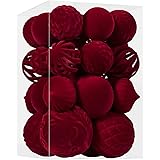Are common decorating mistakes subtly undermining the comfort and aesthetic appeal of your living space? It is often observed that homes, despite considerable effort, can sometimes feel less inviting or cohesive than desired. The subtle nuances of interior design, as explored by architect Lorenzo in the insightful video above, frequently elude homeowners.
As an architect, Lorenzo identifies common design pitfalls that inadvertently diminish a home’s perceived value and overall sense of well-being. These architectural observations are not merely about aesthetics; they delve into how spaces are experienced on a visceral level. This guide expands upon these crucial insights, providing deeper context and actionable strategies to transform your residence from merely a structure into a truly intentional and harmonious environment.
Establishing Visual Anchors: The Power of a Focal Point
The absence of a clear focal point is a pervasive issue that often leads to visual chaos within a room. When every element competes for attention, the cognitive load placed on the observer becomes excessive, resulting in a restless and disorganized perception of the space. A room, much like a carefully composed painting, benefits immensely from a dominant element around which all other features can harmonize.
This central anchor, be it a majestic fireplace, a grand window offering a captivating vista, or a significant piece of art, functions as the room’s gravitational center. Once established, all ancillary furnishings and decor are deliberately positioned to support and complement this primary feature. This principle is not about enforcing strict minimalism; rather, it cultivates a rhythmic flow, allowing the eye to comfortably navigate and appreciate the spatial arrangement.
Beyond Uniformity: Curating Cohesion Over Matchy-Matchy Decor
An overly zealous pursuit of matching elements is a prevalent pitfall, frequently transforming living spaces into sterile showrooms rather than authentic homes. The inclination to pair identical sofas, rugs, curtains, and cushions often eradicates individuality and narrative from an interior. True design artistry is not achieved through monotonous uniformity; instead, it is found in the thoughtful curation of disparate elements that, despite their differences, coalesce into a harmonious whole.
A space gains its soul and character through the deliberate layering of varied textures, colors, and historical contexts. The blending of a rustic wooden coffee table with a contemporary linen sofa, or the juxtaposition of a sleek modern lamp with a cherished antique armchair, creates a compelling dialogue within a room. This approach signals a sophisticated understanding of design, where belonging supersedes mere identicality, allowing a space to whisper tales of a well-lived life rather than shout of arduous effort.
The Imperative of Authenticity: Embracing Genuine Materials
The pervasive use of fake or imitation materials is a consistent source of design discord. Products such as faux marble countertops, artificial plants, or simulated wood grains often betray their true nature, communicating a lack of genuine craftsmanship and material honesty. The human eye possesses an innate ability to discern authenticity, and such substitutions frequently fall short, diminishing the overall integrity of a design scheme.
Authentic materials, by their very essence, tell a story; they acquire a patina through time and use, embodying a genuine connection to their origin. A simple, well-worn oak table, bearing the marks of countless meals and conversations, possesses a depth of character that no plastic replica can emulate. Where genuine materials are financially or practically unfeasible, it is advisable to select alternatives that embrace their inherent qualities, such as painted wood, honest concrete, or natural linen, rather than attempting to masquerade as something they are not. Good design, in its purest form, prioritizes authenticity over the pretense of expense.
Strategic Negative Space: The Art of Uncluttered Surfaces
A pervasive tendency involves the indiscriminate filling of every available surface, driven by a misconception that emptiness equates to incompleteness. Counters, shelves, and side tables are frequently laden with an assortment of candles, picture frames, small plants, and haphazardly stacked books. This accumulation of visual stimuli creates a significant cognitive load, causing even generously proportioned rooms to feel constricted and visually taxing.
The judicious application of negative space, often referred to as “white space” in design, provides essential visual respite. It acts as the oxygen that allows individual objects to breathe and command attention, enhancing their perceived value and presence. A practical exercise involves the removal of approximately half the items from a cluttered surface, followed by a step back to re-evaluate the arrangement. The remaining objects often reveal new meaning and impact, demonstrating that less is frequently more, particularly in smaller living environments where every square inch is at a premium.
Illuminating Spaces: The Transformative Power of Layered Lighting
The reliance on a single overhead light source is widely considered a silent killer of sophisticated interior design, casting a flat, dull pallor over an entire room. Lighting, an architectural secret weapon, fundamentally shapes mood, accentuates textures, and influences the perceived saturation of colors. An effective lighting strategy is intrinsically layered, incorporating ambient, task, and accent lighting to achieve comprehensive illumination and atmosphere.
Ambient lighting provides general brightness, while task lighting is specifically directed to facilitate activities such as reading or cooking. Accent lighting, conversely, is employed to highlight architectural features, artwork, or decorative objects, thereby adding depth and drama. An instant upgrade can be achieved through the introduction of strategically placed table lamps featuring warm-toned bulbs or the integration of discreet LED strips beneath furniture, which can dramatically enhance the tactile and visual quality of a space, proving that even the most exquisite furnishings are diminished without proper illumination.
The First Impression: Mastering Sightlines and Entry Sequences
Upon entering any room, the human eye instantaneously registers a primary visual point. If this initial perception is dominated by disorganized cables, a misplaced waste bin, or an unappealing television stand, the entire space is immediately—and often subconsciously—categorized as disorderly. This critical first view, known as the sightline, is an area of intense focus for architects, as it profoundly influences the initial psychological impact of a space.
A simple yet effective diagnostic involves standing at the threshold of a room and objectively assessing the immediate visual information received. Is this initial impression balanced, intentional, and aesthetically pleasing? Even minor adjustments, such as centering a piece of artwork or repositioning a chair to create a more inviting vista, can significantly enhance the perceived composition of a room. Every space offers a greeting; ensuring this welcome is carefully curated contributes substantially to the overall sense of order and welcome.
Proportional Harmony: The Art of Appropriately Scaled Furniture
Scale, an often invisible yet profoundly impactful force in design, is frequently misjudged by homeowners. The placement of an oversized sofa within a confined room does not evoke coziness; instead, it creates a palpable sense of constriction and visual panic. Conversely, a diminutive rug positioned beneath a substantial bed appears not as minimalist, but rather as adrift and insignificant. Before any furniture acquisition, meticulous measurement of the designated space is paramount.
A practical technique involves mapping out the furniture’s footprint on the floor with painter’s tape, allowing one to physically navigate the proposed arrangement and discern its spatial implications. When scale is correctly calibrated, the entire environment exudes a sense of calm, balance, and inevitability, as if each element occupies its preordained position. Conversely, an incorrect scale, even if its specific discord remains undefined, often registers as a subtle, unsettling tension that permeates the entire room, impacting its haptic feedback and overall psychological comfort.
Embracing Expressive Hues: Confidence in Color Selection
The widespread adoption of neutral palettes—beige, gray, and white—is often driven by an apprehension of misapplying color, resulting in environments that lack vitality. However, this cautious approach frequently strips a home of the very vibrancy and personality that makes it feel alive. The introduction of color does not necessitate rainbow-hued walls; even a singular, confident chromatic choice, such as a deep emerald accent wall, a richly burgundy cushion, or a vibrant cobalt vase, can fundamentally transform a room’s character.
Color, when thoughtfully employed, does not diminish space; rather, it can expand it by introducing depth and emotion. The perception of flatness is often a byproduct of insufficient contrast, not color itself. A well-chosen hue signifies decisiveness and intention, hallmarks of excellent design. The psychological impact of color is profound; a strategic application can inject dynamic energy and personal narrative into an otherwise monochromatic setting.
The Transitional Gateway: Prioritizing Entryway Design
The entryway, serving as the inaugural chapter of a home’s narrative, is paradoxically among the most frequently neglected spaces. This transitional zone often becomes a repository for the day’s accumulated chaos—shoes, coats, and mail—thereby inadvertently establishing a tone of disarray for the entire residence. Yet, even the most modest entrance holds significant potential for transformation and profound impact.
A simple, functional bench, a well-placed mirror, or a warmly illuminated lamp can effectively convert disorganization into a welcoming embrace. The entryway’s primary function is to facilitate a psychological shift from the external world’s frenetic energy to the serene calm of one’s private sanctuary. It is not merely a decorative space; it is a critical transitional moment, providing haptic cues and visual signals that communicate “you are home.” Thoughtful design here powerfully frames the narrative of arrival and belonging.
The Nuance of Emptiness: Redefining Minimalism
While the principles of minimalism are often lauded for fostering tranquility, an extreme adherence can inadvertently lead to environments that feel sterile and devoid of warmth. Bare walls, while clean, can evoke the impersonal atmosphere of a hotel, lacking the lived-in character that defines a true home. Walls represent a significant canvas within any interior, serving as a primary medium for personal expression and storytelling.
It is not about filling every available space, but rather about intentionally curating elements that resonate deeply with the inhabitants. A cherished piece of art, a collection of meaningful photographs, or a thoughtfully arranged shelf of books imbues a room with personal history and profound sentiment. Such expressive elements need not be extravagant or perfectly styled; their value lies in their significance to the individual. When walls articulate an authentic narrative, even the simplest room transcends mere functionality to achieve a profound and resonant character.
Designing for Experience: Crafting Moments, Not Just Rooms
A common oversight, even among seasoned professionals, involves designing spaces based on conventional labels—”living room,” “bedroom,” “bathroom”—as if life unfolds strictly according to a floor plan’s designations. However, the true essence of living transpires not within predefined rooms but within cherished moments. The specific armchair bathed in morning light where coffee is savored, the well-worn spot on the sofa reserved for evening reading, or the transient beam of sunlight that graces a wall at dusk—these are the experiential threads that animate a space.
The paradigm should shift from “what does this room require?” to “what desired experiences or feelings should this room facilitate?” This subtle reorientation yields vastly different outcomes. Perhaps a bedroom’s priority is a tranquil reading nook before a grand headboard, or a kitchen benefits more from a conversational stool than another bank of cabinets. By designing around these lived moments, a home evolves beyond a mere collection of categorized spaces, becoming a deeply personal reflection of its inhabitants and an unforgettable backdrop for life’s authentic narrative. Fixing even a few of these prevalent decorating mistakes, as discussed by architects, can profoundly enhance the intentionality, richness, and tranquility of any home.











